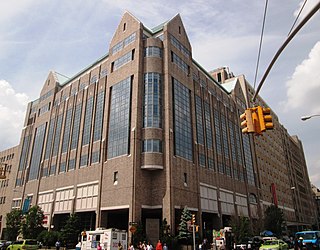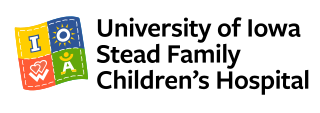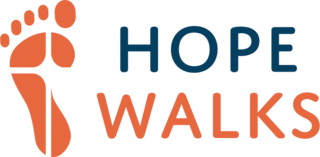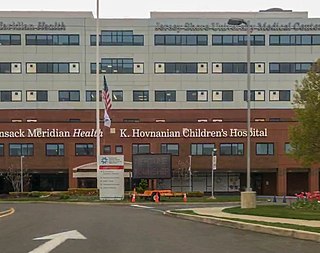
Cerebral palsy (CP) is a group of movement disorders that appear in early childhood. Signs and symptoms vary among people and over time, but include poor coordination, stiff muscles, weak muscles, and tremors. There may be problems with sensation, vision, hearing, and speech. Often, babies with cerebral palsy do not roll over, sit, crawl or walk as early as other children. Other symptoms include seizures and problems with thinking or reasoning. While symptoms may get more noticeable over the first years of life, underlying problems do not worsen over time.

Clubfoot is a congenital or acquired defect where one or both feet are rotated inward and downward. Congenital clubfoot is the most common congenital malformation of the foot with an incidence of 1 per 1000 births. In approximately 50% of cases, clubfoot affects both feet, but it can present unilaterally causing one leg or foot to be shorter than the other. Most of the time, it is not associated with other problems. Without appropriate treatment, the foot deformity will persist and lead to pain and impaired ability to walk, which can have a dramatic impact on the quality of life.

Arthrogryposis (AMC) describes congenital joint contracture in two or more areas of the body. It derives its name from Greek, literally meaning 'curving of joints'.

Shriners Children's is a network of non-profit medical facilities across North America. Children with orthopaedic conditions, burns, spinal cord injuries, and cleft lip and palate are eligible for care and receive all services in a family-centered environment, regardless of the patients' ability to pay. Care for children is usually provided until age 18, although in some cases, it may be extended to age 21.

University of Iowa Hospitals & Clinics (UIHC) is an 811-bed public teaching hospital and level 1 trauma center affiliated with the University of Iowa. UI Hospitals and Clinics is part of University of Iowa Health Care, a partnership that includes the University of Iowa Roy J. and Lucille A. Carver College of Medicine and the University of Iowa Physicians group practice.

Morgan Stanley Children's Hospital of NewYork-Presbyterian is a women's and children's hospital at 3959 Broadway, near West 165th Street, in the Washington Heights neighborhood of Manhattan, New York City. It is a part of NewYork-Presbyterian Hospital and the Columbia University Irving Medical Center. The hospital treats patients aged 0–21 from New York City and around the world. The hospital features a dedicated regional ACS designated pediatric Level 1 Trauma Center and is named after financial firm Morgan Stanley, which largely funded its construction through philanthropy.

Ignacio Ponseti, also known as Ignasi Ponsetí i Vives, was a Spanish-American physician, specializing in orthopedics. He was born on 3 June 1914 in Menorca, part of the Balearic Islands, Spain, Ponseti was the son of a watchmaker and spent his childhood helping repair watches. This skill was said to eventually contribute to his abilities as an orthopedist. He served three years as a medic during the Spanish Civil War treating orthopedic injuries of wounded soldiers. He left Spain shortly after the end of the war and became a faculty member and practicing physician at the University of Iowa, where he developed his ground-breaking, non-surgical treatment for the clubfoot defect - the Ponseti Method.
The Ponseti method is a manipulative technique that corrects congenital clubfoot without invasive surgery. It was developed by Ignacio V. Ponseti of the University of Iowa Hospitals and Clinics, US, in the 1950s, and was repopularized in 2000 by John Herzenberg in the US and Europe and in Africa by NHS surgeon Steve Mannion. It is a standard treatment for clubfoot.
A vascular malformation is a blood vessel or lymph vessel abnormality. Vascular malformations are one of the classifications of vascular anomalies, the other grouping is vascular tumors. They may cause aesthetic problems as they have a growth cycle, and can continue to grow throughout life.

University of Iowa Stead Family Children's Hospital formerly University of Iowa Children's Hospital and Children's Hospital of Iowa is a pediatric acute care academic children's hospital located in Iowa City, Iowa. The hospital was founded in 1919 and its current facility, opened in 2017, overlooks the university's football home, Kinnick Stadium. The hospital has 190 inpatient pediatric beds and is affiliated with the University of Iowa Carver College of Medicine. The hospital provides comprehensive pediatric specialties and subspecialties to pediatric patients aged 0–21 throughout Iowa and is one of the only children's hospitals in the region and state. University of Iowa Stead Family Children's Hospital also features the only ACS verified Level 1 Pediatric Trauma Center in the state.
CURE International, based in Grand Rapids, MI, is a Christian nonprofit organization that owns and operates eight charitable children's hospitals around the world. CURE provides medical care to pediatric patients with orthopedic, reconstructive plastic, and neurological conditions. The organization's stated mission is to "heal the sick and proclaim the kingdom of God." The organization currently operates hospitals in Ethiopia, Kenya, Malawi, Niger, the Philippines, Uganda, Zambia and Zimbabwe.
Unlike the flexible flat foot that is commonly encountered in young children, congenital vertical talus is characterized by presence of a very rigid foot deformity. The foot deformity in congenital vertical talus consists of various components, namely a prominent calcaneus caused by the ankle equines or plantar flexion, a convex and rounded sole of the foot caused by prominence of the head of the talus, and a dorsiflexion and abduction of the forefoot and midfoot on the hindfoot. It gets its name from the foot's resemblance to the bottom of a rocking chair. There are two subcategories of congenital vertical talus; namely idiopathic or isolated type, and non-idiopathic type, which may be seen in association with arthrogryposis multiplex congenital, genetic syndromes and other neuromuscular disorders.
Dr. John Francis Sarwark is Martha Washington Foundation Professor of Pediatric Orthopedics at Lurie Children's Hospital; Former Head, Pediatric Orthopedic Surgery, Lurie Children's Hospital; and Professor of Orthopaedic Surgery, Northwestern University's Feinberg School of Medicine in Chicago, Illinois.

Over time, the approach to cerebral palsy management has shifted away from narrow attempts to fix individual physical problems – such as spasticity in a particular limb – to making such treatments part of a larger goal of maximizing the person's independence and community engagement. Much of childhood therapy is aimed at improving gait and walking. Approximately 60% of people with CP are able to walk independently or with aids at adulthood. However, the evidence base for the effectiveness of intervention programs reflecting the philosophy of independence has not yet caught up: effective interventions for body structures and functions have a strong evidence base, but evidence is lacking for effective interventions targeted toward participation, environment, or personal factors. There is also no good evidence to show that an intervention that is effective at the body-specific level will result in an improvement at the activity level, or vice versa. Although such cross-over benefit might happen, not enough high-quality studies have been done to demonstrate it.
Children's feet are smaller than those of adults, not reaching full size until the ages of 13 in girls and 15 in boys. There are correspondingly small sizes of shoes for them. In poor populations and tropical countries, children commonly go barefoot.
A DAFO is a brand name for some lower extremity braces that provide thin, flexible, external support to the foot, ankle and/or lower leg. They have the particularity to fit firmly the ankle and correct concisely the foot deformity within special pressure points. It is stated to help in improving mobility and stability of the ankle joint on CP patients, evidence shows that immediate gross motor function improved with the use of DAFO's as well. Designed to help a patient maintain a functional position, a DAFO can improve stability for successful standing and walking.
Lynn Taylor Staheli was an American pediatric orthopedist. He was a founding editor of the Journal of Pediatric Orthopaedics and founder of Global HELP Organization, a nonprofit organization that provides free medical information in developing countries.

Hope Walks, formerly CURE Clubfoot, is a Christian nonprofit organization based in Dillsburg, Pennsylvania, that treats infant clubfoot in developing countries around the world. As of 2019, Hope Walks operates over 130 clinics in 16 countries including Ethiopia, Niger and the Dominican Republic. Since 2006, over 135,000 children have been enrolled in the program for treatment.

The K. Hovnanian Children's Hospital (KHCH) at Jersey Shore University Medical Center is a pediatric acute care hospital located in Neptune Township, New Jersey. The hospital has 88 beds and provides comprehensive pediatric specialties and subspecialties to infants, children, teens, and young adults aged 0–21 throughout Coastal New Jersey. It is affiliated with both the Hackensack Meridian School of Medicine at Seton Hall University and Robert Wood Johnson Medical School, and is a member of Hackensack Meridian Health. KHCH features the only pediatric trauma center in the region, and 1 of 3 in the state. KHCH also partners with Ocean Medical Center, Riverview Medical Center, Southern Ocean Medical Center, and Bayshore Medical Center to provide pediatric care to the entire surrounding region of Hackensack Meridian Health hospitals.

Dimitar Ivanov Raykov is a Bulgarian orthopedic traumatologist, professor, and Rector of the Medical University of Varna.













